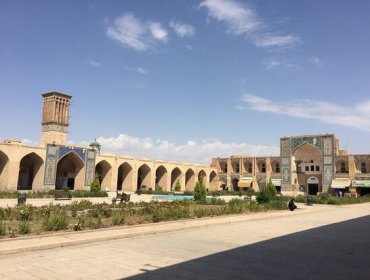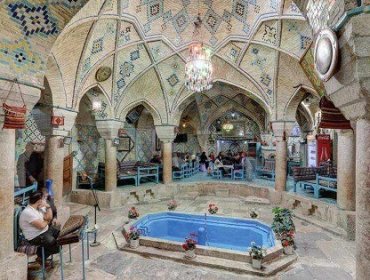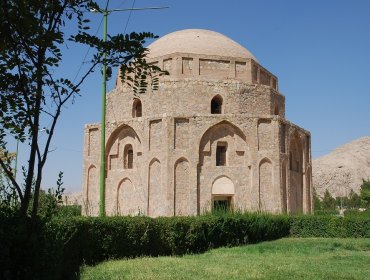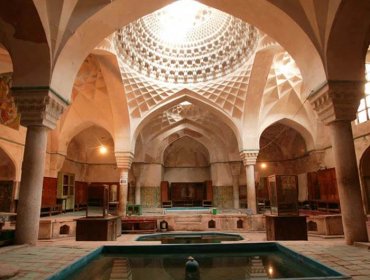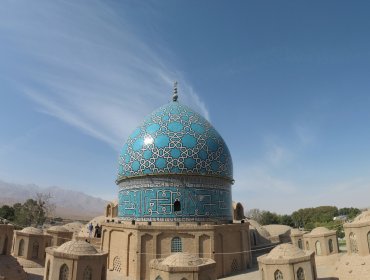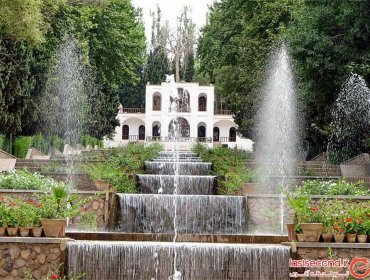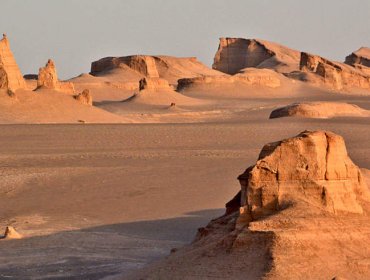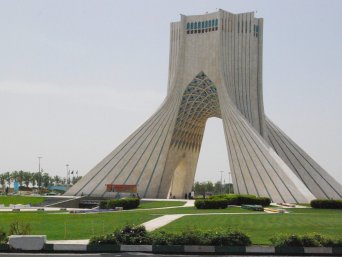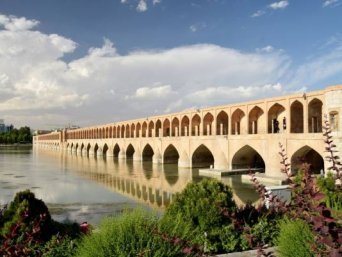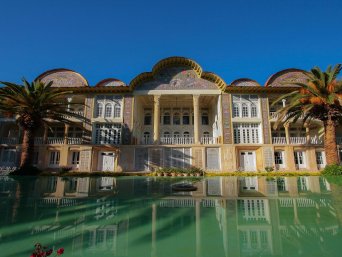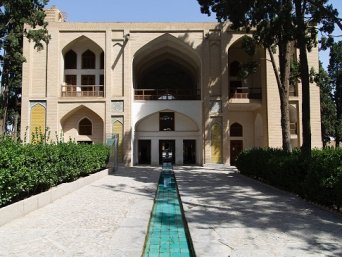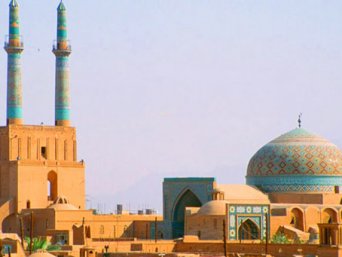Kerman, a blend of natural and man-made attractions
Kerman is one of the most ancient cities and biggest tourist attractions in Iran. like many other ancient sites, it enjoys a rich history, a strong cultural heritage and numerous historical attractions. In addition, thanks to its geographical location, which includes both mountainous and desertic regions, it houses amazing natural formations, leaving all its visitors with a dropped jaw. Actually, visiting Kerman means many out-of-ordinary experiences and memories which you would never ever forget. Now, let’s have a look at the history of the city and tourist attractions you would enjoy in your Kerman City Tour provided by Irandelle Travel Agency.
Writings of Herodotus and a number of tablets found in the Persepolis bring the history of Kerman back to the Achaemenid period. Also, Ammianus Marcellinus, a fourth century historian, mentions Kerman as one of the eighteen great provinces making the “Kingdom of Persians.” However, it is generally believed that it was the great Sassanian king, Ardeshir I, who founded the city in the early 3rd century AD.
After Islam, the governors who ruled the city were appointed by Abbasid and Ommayid Caliphs. The history of Kerman during this period was a tumultuous one, marked by conflicts between Iranians and their Arab rulers.
During the Taherid period (821-73), Kerman was subjected to rule of governors from Khorasan, a large and very important province on its east.
In the mid-9th century, at the time of Saffarids, Kerman and Shiraz incorporated into a vast military base which helped Yaqub Leith Saffari to organize and expand his attacks against the Arab rulers of Iran.
Enjoying its privileged position across trade routes importing the products from the Indian Ocean shorelands into the Persian lands and beyond, Kerman became a prosperous city during the Buyid (934-1062 AC) and Saljuq (1037-1194AC) periods.
Nevertheless, when Oghuz Turks attacked Kerman and Saljuq rulers lost power, a time of social distress followed. Yet, after a while, Malek Dinar brought order back to Kerman. Then, Mongols came, seized the power and ruled Kerman up to the end of the 14th century.
Three centuries later, during the Safavid period in 17th century and under the rule of Ganj-Ali Khan, Kerman became prosperous once more. During his rule, Ganj-Ali Khan ordered the construction of a new square or Maydan, which became the new center of the town. This square was surrounded by a number other vital buildings that we will explain below. Nowadays, Ganj-Ali Khan Complex is the most visited sight by tourists choosing Kerman as one of their destinations in Iran.
About the same time, a number of impressive gardens were also built in Kerman, for instance, Shazdeh Garden, noted for its unique architecture and considered as a heavenly refuge located in the middle of an arid land.
All in all, the history of Kerman remained a history violent attacks and ruthless despots until the end of Qajar period. It only gained stability and reached peace under the central government in Tehran during the 19th century.
An interesting point to know about the Kerman is that it hosts one of the largest communities of Iranian Zoroastrians, their fire temples and ceremonies attracting hundreds of Iranian and foreign tourists each year.
It is also worth mentioning that Kerman is one of the most important centers of carpet production in Iran. In the 16th century, business moved to the sea. So, Kermanian people who were skilled in animal husbandry and had enough wool at hand, turned to carpet weaving and their province has remained a chief center in carpet industry up to recent times.
Also, Kermanian farmers produce world-quality cumin, known as the most famous souvenir of Kerman.
Finally, Kerman is one of the most conspicuous places for those interested in desert tours. Exploring Kalouts desert, Keshit Canyon and Gandom Beryan desert, which is known as one of the hottest places on the Earth, is the dream of anyone who defines him/herself as a true desert-lover.
Once in Kerman, you would also have the chance to visit the largest adobe citadel in the world, a UNESCO World Heritage Site, the historic citadel of Bam.
So, if you are eager to have an adventurous trip to Kerman, do not hesitate to contact us at Irandelle Travel Agency and book your Kerman City Tour.
Kerman City Tour Itinerary
At around 8:45 am our tour guide picks you up at your place of residence. Then, we go to visit the Ganj-Ali Khan Complex, built in the 17th century. At its center, the Ganj-Ali Khan Complex includes a pretty square, measuring 50×100 square meters, which is also known as the Ganj-Ali Khan Square. This square, which was modeled after Naqsh-e Jahan Square in Isfahan, is surrounded by a number of vital buildings and structures which once made the throbbing heart of Kerman city.
To the South of the Ganj-Ali Khan Square, there is the grand bazaar of Kerman, known as the Ganj-Ali Khan Bazaar. Being three kilometers long, the Ganj-Ali Khan Bazaar has a cross-shaped structure comprised of various caravanserais, sarās and timchehs.
On the right side of the Ganj-Ali Khan Bazaar, there is the famous Ganj-Ali Khan Bathhouse or hammam, now restored and transformed into a museum. Amazing frescos decorate the walls of the museum and wax dummies show the workings of a traditional Iranian hammam. At the east and west ends of the bathhouse, you will find the “the time stones,” translucent, 10cm-thick alabaster doorways through which bathers could get a rough idea of the time according to how light it was outside.
If you turn to the north of the Ganj-Ali Khan Square, you will face the photogenic Bazar-e Mesgari Shomali, dedicated to coppersmiths. The lavishly decorated private Ganj-Ali Khan Mosque, which we will visit during our Kerman City Tour, is located on the north-eastern side of the square.
Among other attractions of the square, we can mention the Golshani Caravanserai, today housing a number of antique-cum-bric-a-brac stores and the Kerman Tour Guides Association. The caravanserai is located on the eastern side of the square. To the west of the square, there is an āb-anbār or water cistern.
Having finished exploring the Ganj-Ali Khan Square and its beautiful surrounding structures, we head to visit the Saqfavid-era Yakhchal Moayedi. It is a well-preserved adobe structure which was used to store Ice.
Then, we will go to Gonbad-e Jabaliye or Jabaliye Dome. There is not much information about the history of dome, but some historians believe that it is a 2nd century AD building, used as an observatory. The main part of this building is constructed of stone, but its dome, which was added 150 years ago, is brick. Today, the Jabaliy-e Dome is used as a unique museum, guarding old gravestones.
And that is how we end the first day of our Kerman City Tour.
On the second day of our Kerman, you have to get up a little bit early since we are going to visit a certain number of attractions outside Kerman. Our guide will visit you at 8:00 am.
First, we will go to Mahan, a pictures and quiet town about 35 kilometers south-east of Kerman. There, we will visit the Shrine of Shah Ne’mattolah Vali. Shah Ne’mattolah Vali was a famous dervish, mystic and poet who lived more than 100 years and died in 1431. The mausoleum dates from 1436, built by an Indian king who was a great proponent of Shah Ne’matoolah Vali’s teachings. In the following years, many rulers added to the complex, most notably Shah Abbas I, who added the turquoise-tiled dome. The mausoleum is also known known for its seven finely carved Indian doors. Another highlight of the shrine is the small room in which Shah Ne’mattolah Vali used to meditate, decorated with calligraphy in spiral wheel pattern.
Our next destination after the shrine of Shah Ne’mattolah Vali is an amazingly beautiful garden, known as Bagh-e Shazdeh. Constructed in 1837, this soul-refreshing garden contains a cascading series of fountain leading up to a palace. The palace was the residence of Abdul Hamid Mirza, one of the last princes of Qajar dynasty.
To immerse ourselves more in the lively atmosphere of the Shazdeh Garden, we have the good news that you will have a delicious lunch in a high-quality traditional restaurant in the same Bagh-e Shazdeh.
Having finished our lunch, we head for Shahdad, a 75 minutes’ drive northeast of Kerman, in the Takhab area. This area is composed of about thirty oasis villages, wedged between the Payeh Mountains to the sorth and Dasht-e Lut to the north.
Leaving the Takhab behind, the road to Birjand heads north into the Kaluts, a 145km-long and 80km-wide stretch of desert dominated by long lines of five- to 10-storey high yardangs (‘sand castles’) that have been sculpted over millennia by a unidirectional wind (though locals will give you all sorts of alternative explanations). Whichever one you believe, the reality is spectacular, especially at dawn and sunset when light and shadows paint a shimmering canvas of gold and brown.
After visiting the Kalouts, we will go back to Kerman. There, you can eat your dinner, lay down on your bed and enjoy the memories of all the amazing places you visited and all the adventures you had in just one day.

